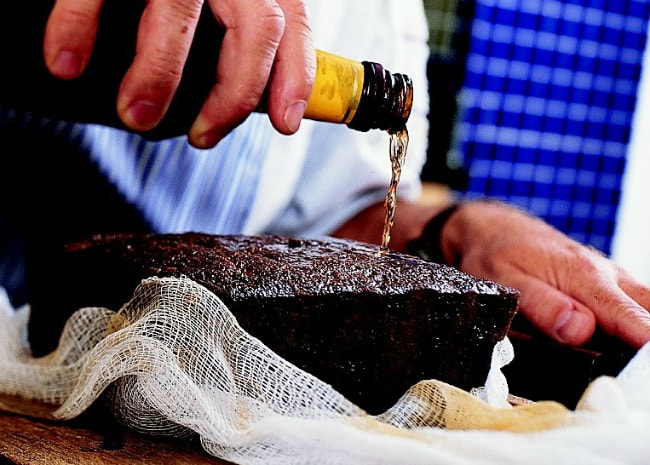Made with chopped candied or dried fruit, nuts, and spices and sometimes soaked in spirits, fruitcake has been a holiday gift-giving tradition for many years.
Dating back to ancient Rome, one of the earliest known recipes lists pomegranate seeds, pine nuts, and raisins mixed into barley mash. Records indicate that in the Middle Ages, makers added honey, spices, and preserved fruits. Recipes for fruitcakes vary from country to country, depending on available ingredients and tradition.
In the 16th century, two achievements crystallized to make fruitcakes more affordable and accessible. First, sugar from the American Colonies became abundant. Second, it was discovered that high concentrations of sugar could preserve fruits. These two actions resulted in excess candied fruit. Consequently, fruitcake making grew.
- Typically, Americans produce fruitcakes abundant in fruit and nuts
- In America, mail-order fruitcake began in 1913.
- Charities often sell commercial fruitcakes from catalogs as a fundraising event.
- In 1935, the expression “nutty as a fruitcake” was coined. The phrase came about as a result of excess nuts some Southern bakeries added to their fruitcakes due to their access to cheap nuts.
- Most mass-produced fruitcakes in America are alcohol-free.
- Some traditional recipes include liqueurs or brandy. Bakers then complete the fruitcake by covering it with powdered sugar.
- Some fruitcake makers soaked their fruitcakes in brandy-soak linens believing the cakes improve with age.


 RSS Feed
RSS Feed